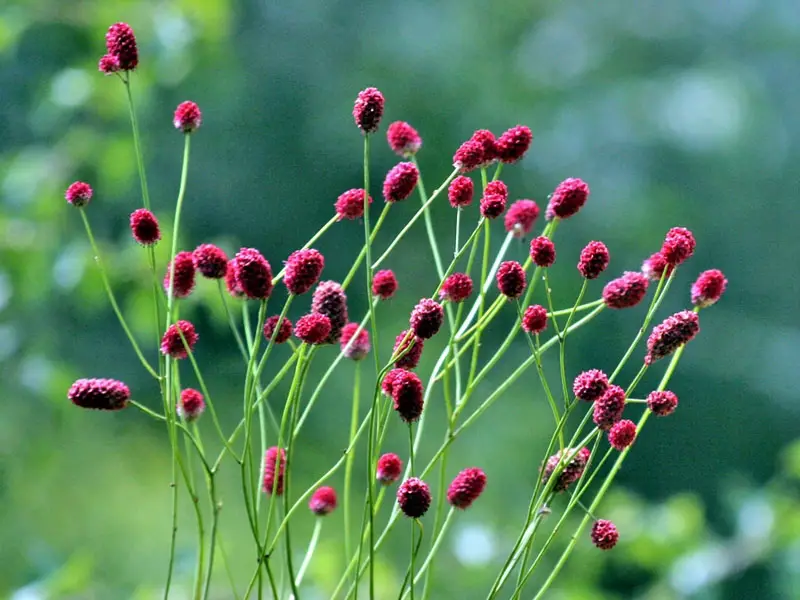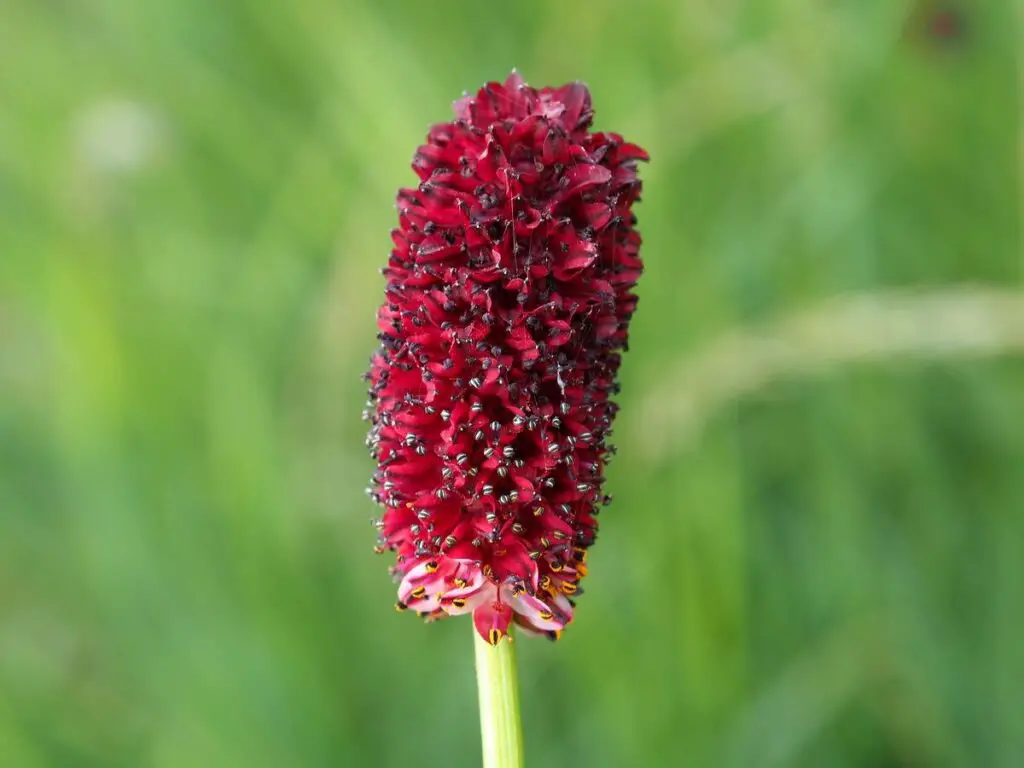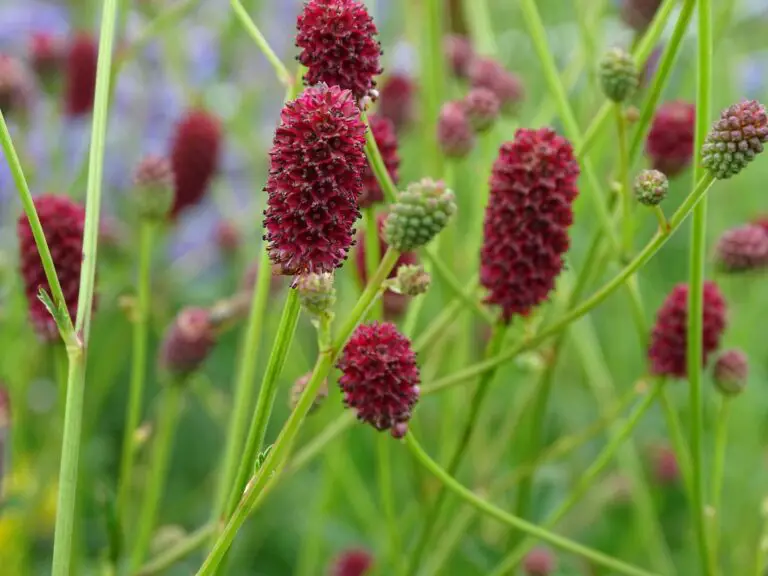Bloodwort, a member of the rose family, boasts a variety of medicinal properties.
Folk medicine has long utilized this plant to control bleeding and combat pulmonary tuberculosis.
Additionally, it aids in the treatment of skin conditions and provides relief for gastrointestinal ailments.
Bloodwort has also been found to effectively combat Staphylococcus aureus infections.
If you’re wondering about how to properly use this herb for medicinal purposes, as well as its indications and contraindications, keep reading to find out what you should know.

Introduction
Sanguisorba officinalis L., known in English as bloodwort, is a plant species from the rose family (Rosaceae).
Its name originates from the Latin words “sanguis,” meaning blood, and “sorbeo,” meaning absorb or soak in, which speaks volumes about its properties and potential.
This perennial plant is found in Central and Southern Europe, North America, and Asia, with a straight stem that can reach a length of 30-150 cm.
It produces small, dark brown flowers with an elongated, spike-like shape that are gathered in a cluster inflorescence.
Bloodwort thrives in both dry and wet meadows and blooms from June to September.
It is a melliferous plant that serves as a food source for Hymenoptera. Additionally, it acts as an intermediate host for the larvae of blue butterflies and a rare butterfly species called the Zosimi fairy.

A few facts
Bloodwort, a medicinal plant highly valued in homeopathy, Chinese, and Tibetan medicine, contains beneficial components in its above-ground parts and rhizome.
These parts include tannins, salicylic acid, triterpene saponins, derivatives of ursolic and oleanolic acid, flavonoids, phenolic acids, and tannins such as ellagitannin and gallotanin.
This plant is used both internally and externally, such as in infusions, decoctions, and tinctures, as well as in compresses or sitz baths to treat enlarged hemorrhoids and skin ulcers, and as a hair rinse for seborrhea or dandruff.
It can also be used as a sitz bath to alleviate itching and infections in the genital area.
Bloodwort is also edible, with young leaves and shoots harvested before flowering and added to salads or soups.
In addition to its medicinal and culinary applications, bloodwort is also used as fodder and an ornamental plant.

Popular use
Bloodwort has many uses, as it is attributed with various properties such as:
- Stopping bleeding,
- Absorbing unwanted metabolic products from the blood,
- Antioxidant activity, protecting the cardiovascular system,
- Anti-cancer (protects against cancer with ziyuglycoside II),
- Neuroprotective,
- Slowing aging processes,
- Anti-inflammatory (due to the presence of phenols, ellagic acid and quercetin). The herb helps with infections, but also with inflammatory conditions of the mucous membrane and skin (AD, allergies, eczema, acne),
- Diaphoretic and antipyretic,
- Antibacterial and antiviral,
- Astringent – the plant is effective for inflammation of the gastric mucosa, duodenal ulcers, enlarged hemorrhoids, as well as inflammation of veins and varicose veins,
- Antibacterial, inhibiting biofilm, i.e. the biological membrane produced by staphylococcus aureus bacteria (hence, bloodwort is used for staphylococcus),
- Hemostatic (supports mechanisms responsible for blood clotting)
Herbal raw material is dried rhizome (Radix Sanguisorbae), sometimes also herb (Herba Sanguisorbae).
The plant can be used both systemically and topically. It is used to make tinctures, juice and decoctions.
When not to use?
Bloodstring has potential health benefits, but it’s important to use it safely. Pregnant and breastfeeding women, as well as young children, should avoid using it. People with thrombosis should also not use it.
Like with many other plants, there may be side effects associated with the consumption of bloodstring.
These could include hypersensitivity or allergy, as well as gastrointestinal issues and changes to the mucous membrane and skin.
It’s always a good idea to consult with a healthcare professional before using any new plant for medicinal purposes.

Summary
All in all.
Bloodstring, also known as Sanguisorba officinalis, is a medicinal herb that has been traditionally used in various forms of medicine, including homeopathy, Chinese and Tibetan medicine.
It is known for its numerous beneficial properties, such as its ability to help stop bleeding, absorb unwanted metabolic products from the blood, and provide antioxidant benefits that help protect the cardiovascular system.
Bloodstring can be consumed both internally and externally, in the form of infusions, decoctions, tinctures, compresses or sitz baths.
It can be used to treat conditions such as hemorrhoids, skin ulcers, seborrhea, dandruff, itching, infections in the genital area, inflammation, bacterial and viral infections, and gastrointestinal problems.
It can also be used as a fodder and ornamental plant.
Jokes aside. Pregnant and lactating women, as well as small children, should avoid its use, and people with thrombosis should not use it.
Side effects may include hypersensitivity, allergy, gastrointestinal problems, and changes in the mucous membrane and skin.
Overall, while bloodstring shows promise in treating a variety of health conditions, further research is needed to fully understand its benefits and risks.



